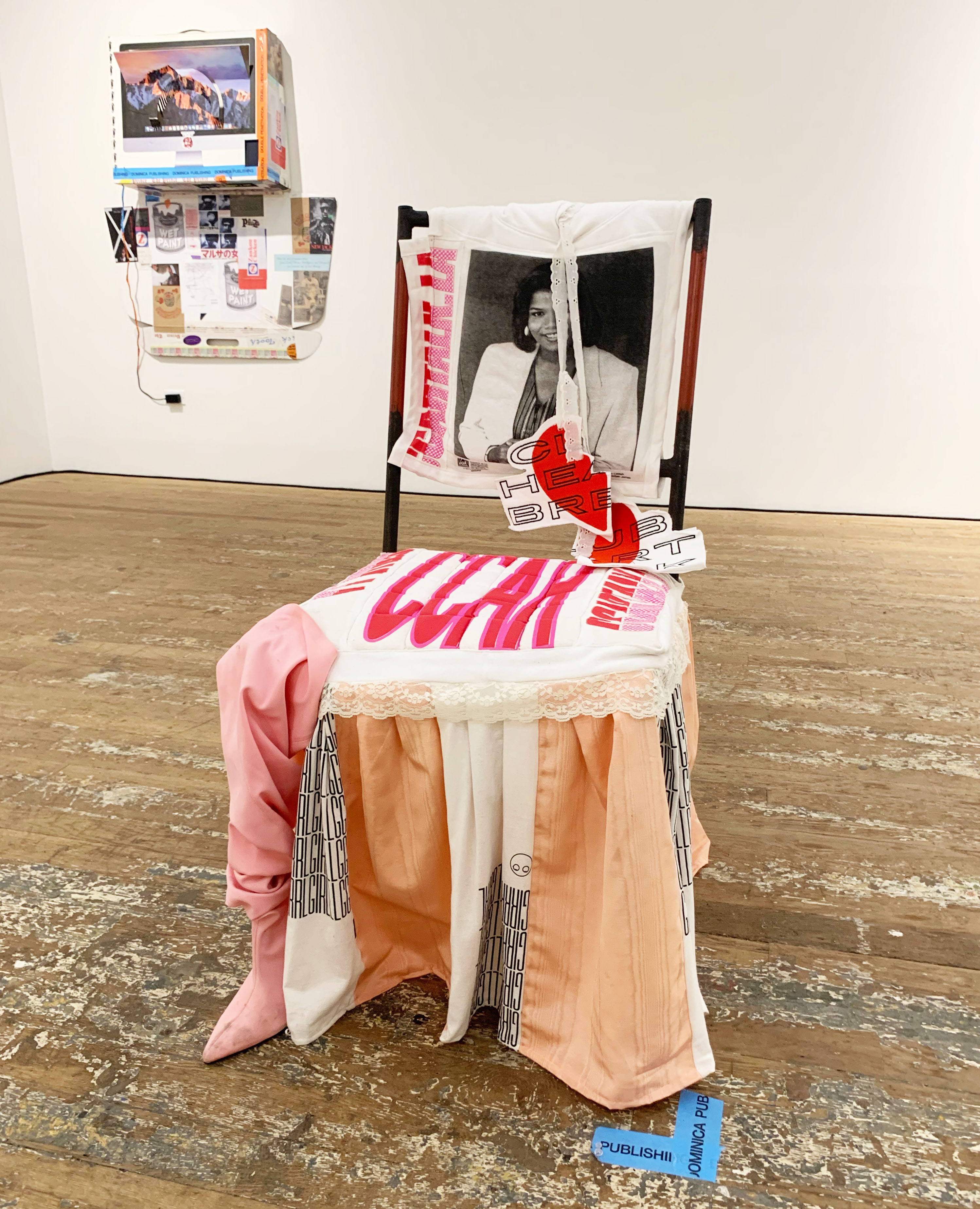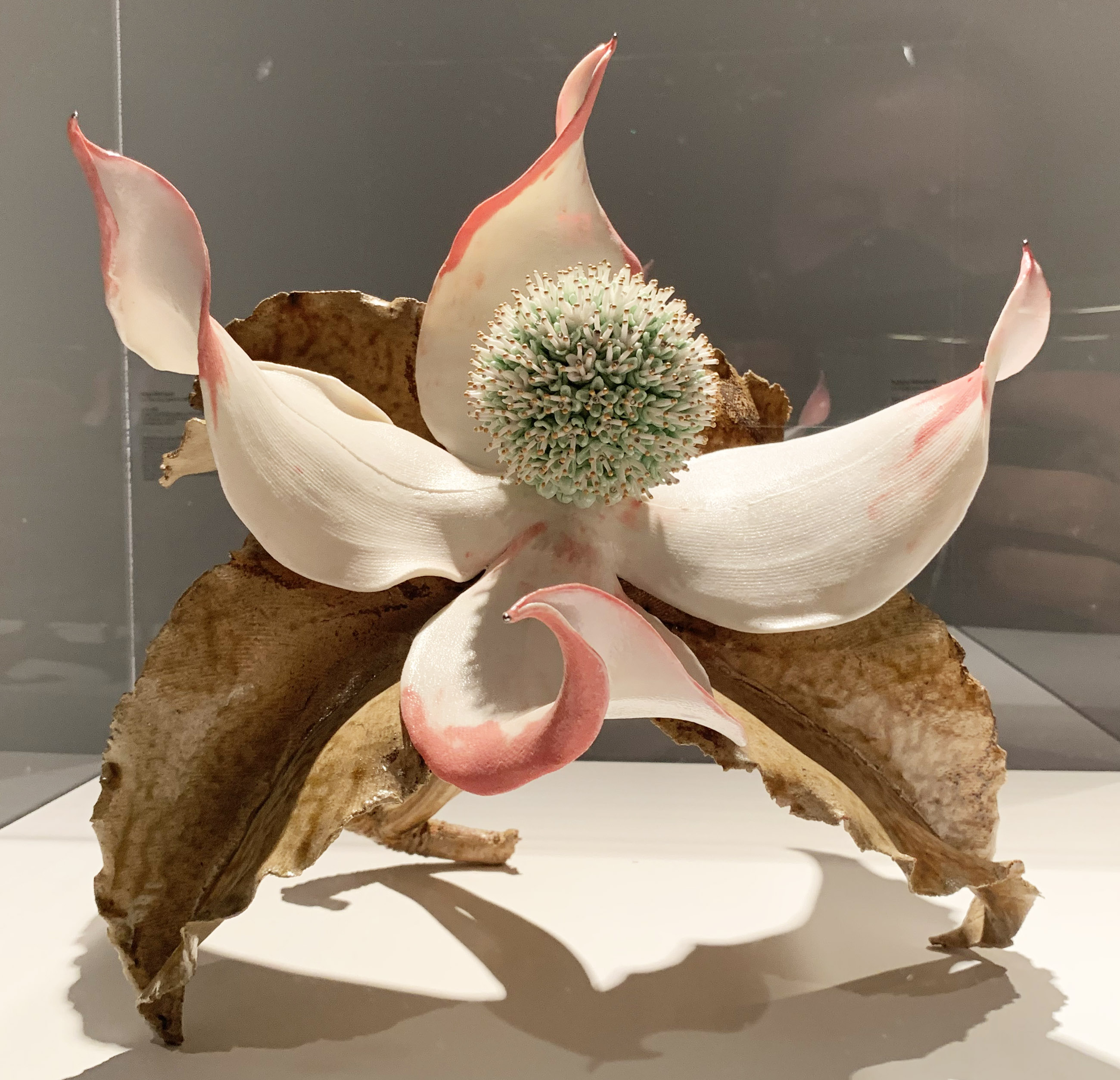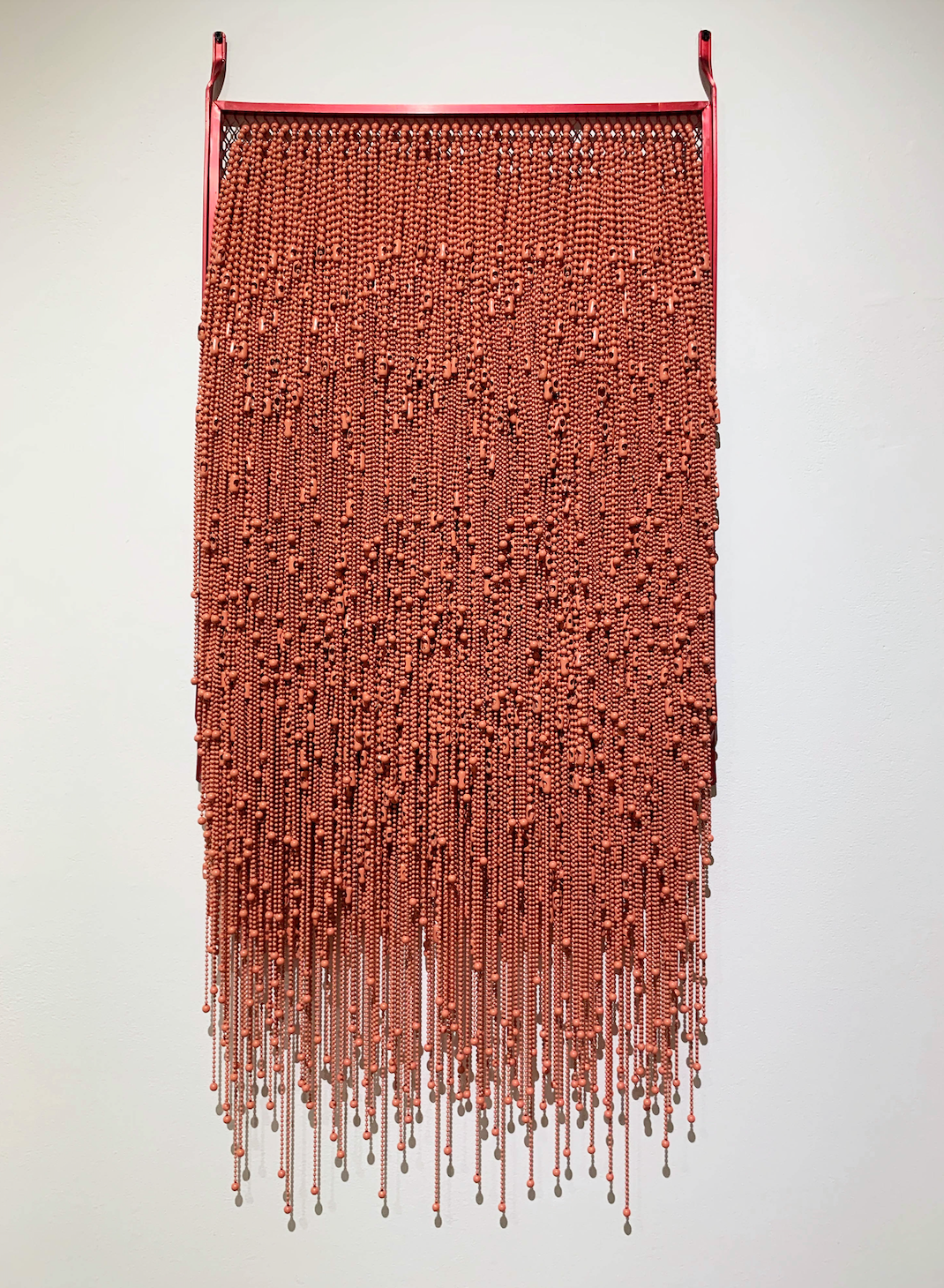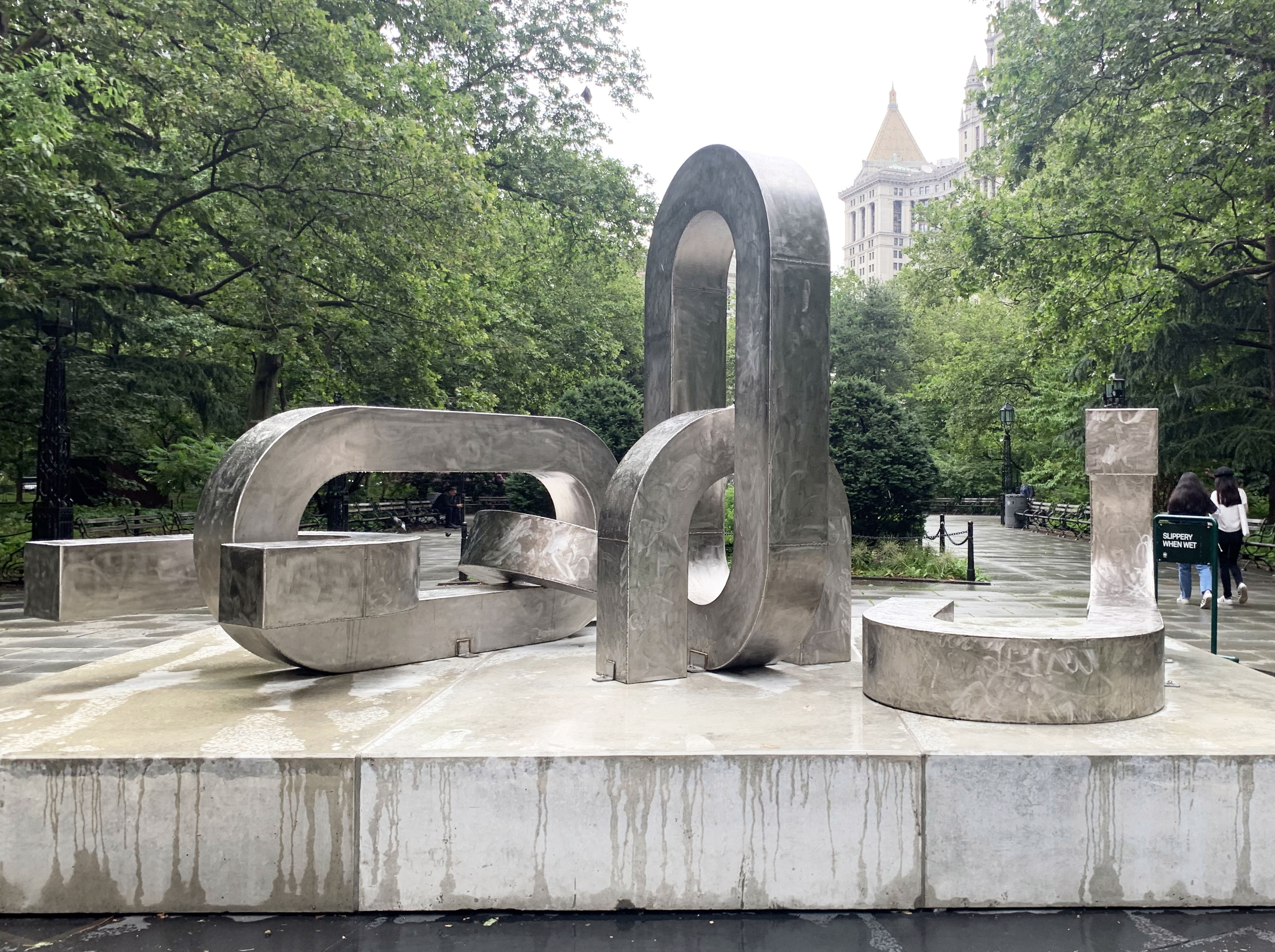Whether they crown an ice cream Sunday or nestle between burger buns, late sculptor David Gilhooly’s recurring ceramic frogs humorously disrupt classic dishes. A member of the California-based Funk Ceramic Movement, Gilhooly embraced the grotesque while picturing foods that should be tempting. Here, a tower of bagels and donuts along with an about-to-topple coffee cup are delivered by a frog with skin resembling bread covered with poppy seeds. (On view in ‘Craft Front and Center’ at the Museum of Art and Design through Feb 13th.)
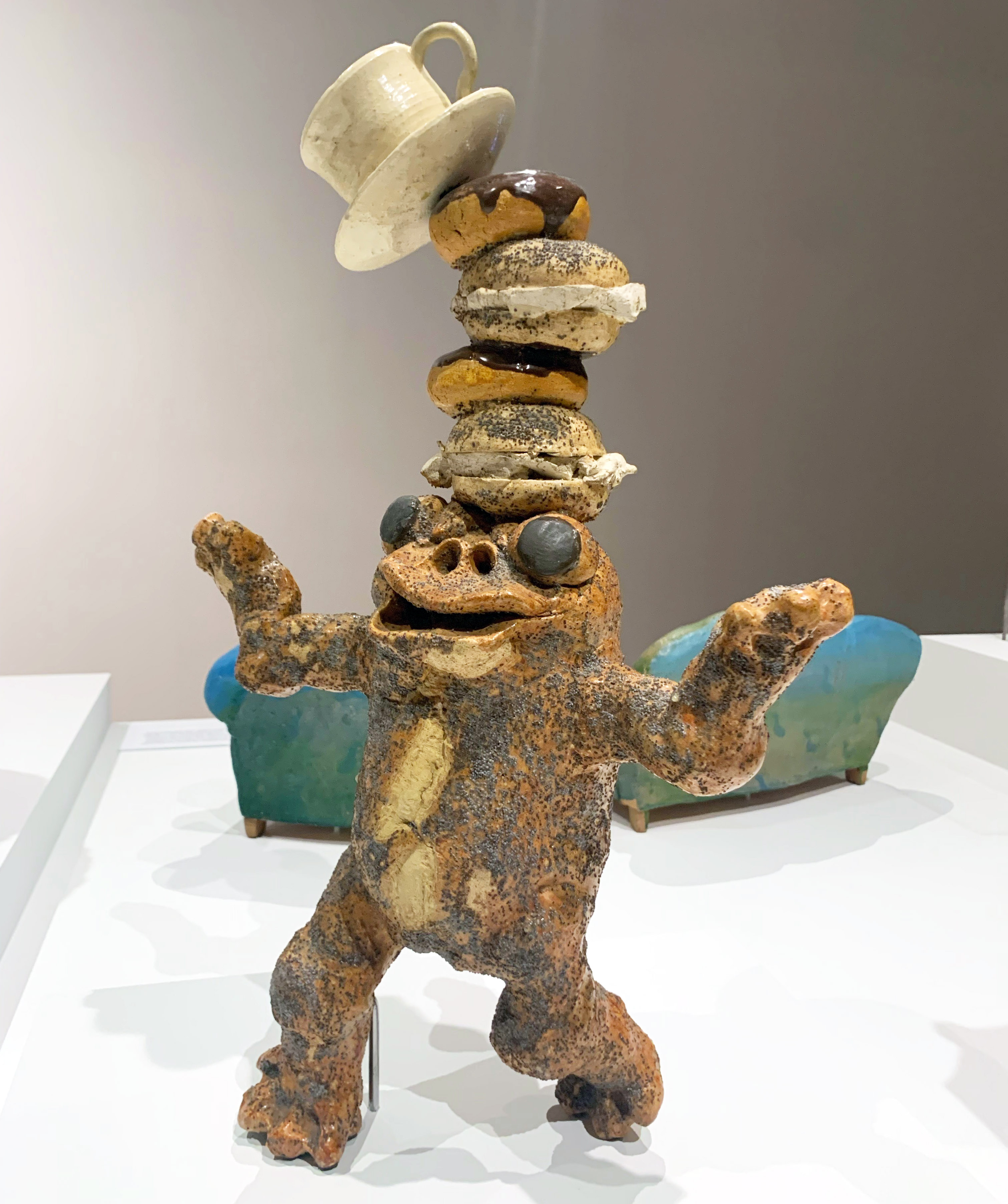
David Gilhooly, Bread Frog as a Coffee Break, glazed earthenware; hand wrought, 23 ½ x 15 ½ x 6 ½ inches, 1981-82.
